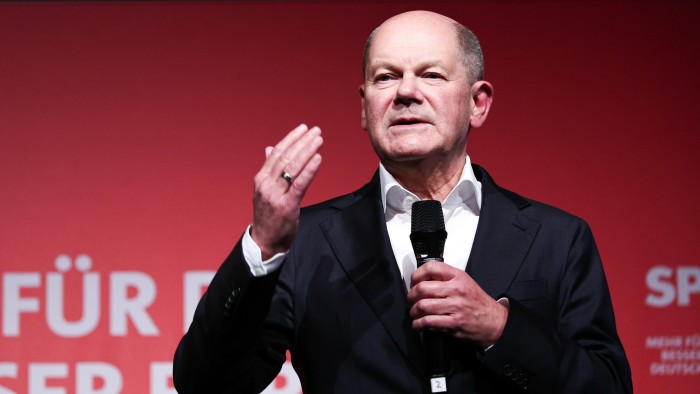Unlock the Editor’s Digest for free
Roula Khalaf, Editor of the FT, selects her favourite stories in this weekly newsletter.
The writer is chief European economist at T Rowe Price
After the re-election of President Donald Trump, bond investors looked to the US for signs of the next large sell-off in their market. But are they looking in the wrong place? Investors should consider whether reform of Germany’s so-called “debt brake” rules on government spending could be a catalyst behind the next market sell-off.
The Bund is the bedrock of the Eurozone, acting as a benchmark rate for the region. Indeed, during fears of a euro area recession in 2019, the demand for Bunds was so strong that yields dipped paradoxically into negative territory, even before pandemic-era support for global bond markets by central banks. Bund yields are also an anchor of global bond markets. Germany has by far the best fiscal fundamentals not just in Europe, but among large markets globally. That makes Bunds, like Treasuries, a haven in times of stress.
The conventional theory suggests that long-term US Treasury yields just reflect expectations of US benchmark interest rates. Monetary policy and estimates of the neutral rate, where monetary policy is neither tight nor loose, are all that matters.
But an alternative perspective is to value bonds in part through their relative supplies. Bunds are very scarce, while Treasuries are abundant. A standard measure of net excess bond supply is the free float — the share of bonds that are available for the private sector to buy. This has been significantly affected by central bank activity in the past couple of years, with free floats first falling and now rising again. But in the past decade, there has been a clear correlation between the US and German free floats and the spread between the US and German 10-year bond yields.
Investors tend to focus more on the Treasuries when predicting the next bond market sell-off. But I argue that a sudden rise in real Bund yields would add to any pressure on Treasuries, catching the market off guard.
The German debt brake is one of the most stringent fiscal rules in the world. It keeps the supply of Bunds very limited. Even when markets offer Germany the opportunity of deeply negative yields on long-term debt, the government cannot borrow. But running such a tight fiscal rule is not without consequence. The significant under-investment in public infrastructure has now led to a consensus for change: even the president of the fiscally hawkish Bundesbank now supports reform. Joachim Nagel told the Financial Times that more fiscal space to address structural threats — such as boosting defence spending and modernising the country’s infrastructure — would mark a “very smart approach”.
The debt brake can be reformed in two ways. At the moment, the government can only run a structural deficit of 0.35 per cent of GDP. This could be expanded to 1 per cent of GDP. The government also has the option to suspend the debt brake in crisis times. But Germany’s constitutional court has recently challenged the government on this approach, making it significantly harder to use the opt-out clause in practice. A reform could also change the rules about when this opt-out clause can be used. In theory, this second type of reform could raise future Bund supply by a lot more. Yet German governments tend to be fiscally conservative in practice. Whichever changes are made, debt brake reform is crossing the fiscal Rubicon for Germany.
While reform will raise net Bund supply, it will be moderate by international standards. But even modest supply rises can lead to significant market repricing. After all, this is relaxing the constraints of a very scarce security. Indeed, headlines announcing the German election coincided with a 0.20 percentage point Bund sell-off against rates used in swaps — a form of derivatives. These rates are a reflection of market views on monetary policy. This means that the recent sell-off in Bunds reflected the expectation of more issuance.
But debt brake reform requires a two-thirds parliamentary majority to amend the constitution. In an age of political surprises, it remains unclear if this can happen. Despite this large degree of uncertainty, Bunds have already sold off significantly. This suggests that a debt brake reform would have a significant impact on Bund yields and therefore global bond markets.
Many advanced economies face significant fiscal challenges. Political action to return debt to a sustainable path is hard to come by, as the current situation in France shows. Debt brake reform, if implemented, may lift other government bond yields, making the challenge of returning public debts to sustainable paths harder. Even the US might feel the ripple effects.
https://www.ft.com/content/b0b7195c-21ca-4c70-b024-a4fa71c3ebf8


